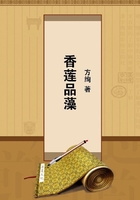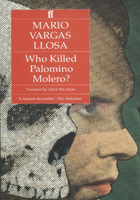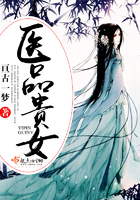Where the ruler of a single town was distinguished by a wise, moderate, and humane government, and by zeal for intellectual culture, he was generally a member of some great family, or politically [ dependent on it.This was the case, for example, with Alessandro Sforza, Prince of Pesaro, brother of the great Francesco, and stepfather of Federigo of Urbino (d.1473).Prudent in administration, just and affable in his rule, he enjoyed, after ; years of warfare, a tranquil reign, collected a noble library, and passed his leisure in learned or religious conversation.A man of the same class was Giovanni II Bentivoglio of Bologna (1463-1508), whose policy was determined by that of the Este and the Sforza.What ferocity and bloodthirstiness is found, on the other hand, among the Varani of Camerino, the Malatesta of Rimini, the Manfreddi of Faenza, and above all among the Baglioni of Perugia.We find a striking picture of the events in the last-named family towards the close of the fifteenth century, in the admirable historical narratives of Graziani and Matarazzo.
The Baglioni were one of those families whose rule never took the shape of an avowed despotism.It was rather a leadership exercised by means of their vast wealth and of their practical influence in the choice of public officers.Within the family one man was recognized as head; but deep and secret jealousy prevailed among the members of the different branches.Opposed to the Baglioni stood another aristocratic party, led by the family of the Oddi.In 1487 the city was turned into a camp, and the houses of the leading citizens swarmed with bravos; scenes of violence were of daily occurrence.At t he burial of a German student, who had been assassinated, two colleges took arms against one another;sometimes the bravos of the different houses even joined battle in the public square.The complaints of the merchants and artisans were vain;the Papal Governors and nipoti held their tongues, or took themselves off on the first opportunity.At last the Oddi were forced to abandon Perugia, and the city became a beleaguered fortress under the absolute despotism of the Baglioni, who used even the cathedral as barracks.
Plots and surprises were met with cruel vengeance; in the year 1491after 130 conspirators, who had forced their way into the city, were killed and hung up at the Palazzo Communale, thirty-five altars were erected in the square, and for three days mass was performed and processions held, to take away the curse which rested on the spot.Anipote of Innocent VIII was in open day run through in the street.Anipote of Alexander VI, who was sent to smooth matters over, was dismissed with public contempt.All the while the two leaders of the ruling house, Guido and Ridolfo, were holding frequent interviews with Suor Colomba of Rieti, a Dominican nun of saintly reputation and miraculous powers, who under penalty of some great disaster ordered them to make peace naturally in vain.Nevertheless the chronicle takes the opportunity to point out the devotion and piety of the better men in Perugia during this reign of terror.When in 1494 Charles VIIIapproached, the Baglioni from Perugia and the exiles encamped in and near Assisi conducted the war with such ferocity that every house in the valley was levelled to the ground.The fields lay untilled.the peasants were turned into plundering and murdering savages, the fresh-grown bushes were filled with stags and wolves, and the beasts grew fat on the bodies of the slain, on so-called 'Christian flesh.' When Alexander VI withdrew (1495) into Umbria before Charles VIII, then returning from Naples, it occurred to him, when at Perugia, that he might now rid himself of the Baglioni once for all; he proposed to Guido a festival or tournament, or something else of the same kind, which would bring the whole family together.Guido, however, was of opinion 'that the most impressive spectacle of all would be to see the whole military force of Perugia collected in a body,' whereupon the Pope abandoned his project.Soon after, the exiles made another attack in which nothing but the personal heroism of the Baglioni won them the victory.It was then that Simonetto Baglione, a lad of scarcely eighteen, fought in the square with a handful of followers against hundreds of the enemy: he fell at last with more than twenty wounds, but recovered himself when Astorre Baglione came to his help, and mounting on horseback in gilded amour with a falcon on his helmet, 'like Mars in bearing and in deeds, plunged into the struggle.'
At that time Raphael, a boy of twelve years of age, was at school under Pietro Perugino.The impressions of these days are perhaps immortalized in the small, early pictures of St.Michael and St.George: something of them, it may be, lives eternally in the large painting of St.
Michael: and if Astorre Baglione has anywhere found his apotheosis, it is in the figure of the heavenly horseman in the Heliodorus.
The opponents of the Baglioni were partly destroyed, partly scattered in terror, and were henceforth incapable of another enterprise of the kind.After a time a partial reconciliation took place, and some of the exiles were allowed to return.But Perugia became none the safer or more tranquil: the inward discord of the ruling family broke out in frightful excesses.An opposition was formed against Guido and Ridolfo and their sons Gianpaolo, Simonetto, Astorre, Gismondo, Gentile, Marcantonio and others, by two great-nephews, Grifone and Carlo Barciglia; the latter of the two was also nephew of Varano Prince of Camerino, and brother-in-law of one of the former exiles, Gerolamo della Penna.In vain did Simonetto, warned by sinister presentiment, entreat his uncle on his knees to allow him to put Penna to death:















